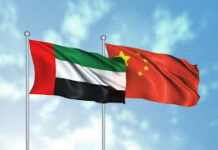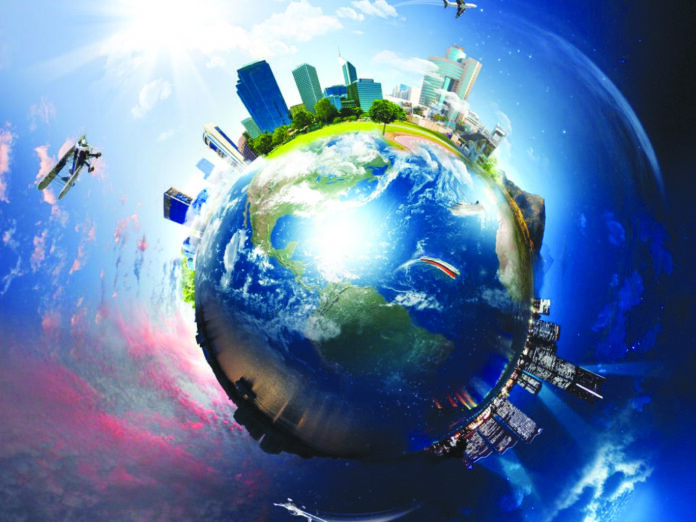In the contemporary era, a consistent transformation in the geopolitical landscape has been quite evident. Traditionally dedicated to its role as the forebearer of geopolitical order, the USA at present seems to be more focused on its internal policy issues than on foreign policy. This disengagement of the USA has made room for the rise of other global powers, notably China and Russia, who are struggling to share the role of global leadership with the USA.
Russia’s invasion of Ukraine has accelerated the evolution of the existing geopolitical framework, where the USA continues to be a global hegemon possessing the “deep power”, that is, the military, economic, and political power in an appropriate amount. Conversely, China has its eye on a peaceful economic rise and is also cautiously flexing its military muscle. India, at present, is carefully watching the changing geopolitical dynamics and is drifting away from Russia, while simultaneously coming closer to the USA and the West, whereas Sino-Russian ties are blooming. In these dynamics, Pakistan is in a catch-22 situation.
Moreover, the Russian-Ukraine crisis has accelerated a realignment in the power dynamics among the major actors such as the USA, China, Russia, India, and Pakistan, thereby, reshaping and reconstructing the contemporary economic construct and geopolitical order
Today, the global competition for influence between the USA and China is bounded by the technological dimension, and its predominance in the digital age creating global competitive advantage and securing the basis for military superiority. The tech rivalry is the main arena for competition between the two global powers as both have achieved remarkable advancement in biotech, IT, cyberspace, AI, and other spheres.
China has replaced the USA as the top global high-tech manufacturer, generating 250 million computers, 1.5 billion smartphones, and 25 million automobiles in 2020. Moreover, besides being a manufacturing powerhouse, China, in the 21st century has also emerged as a stern competitor in producing the foundational technologies namely, 5G, Artificial Intelligence (AI), quantum information science (QIS), biotechnology, semiconductors, and green energy.
It is widely speculated that China will overtake the USA within the next decade. This strategic rivalry between the two states continues to accelerate the polarization of the international system, setting in motion de-globalization and ultimately leading to two parallel orders, one dominated by the USA and the other by China.
As the Russia-Ukraine war continues to reorient the geopolitical landscape, Asia watchers are largely engrossed in the upshots of the strategic competition among the global powers in their respective regions.
Given this, India, an Asian economic giant, is cautiously navigating between the clashing geopolitical powers, as the USA and Russia happen to be its two most important trade partners. India’s consistent economic rise, though less remarkable than China’s, is sufficient to be regarded as a key trend, and India tends to look beyond South Asia to specify its position. Presently, India seems to gradually decouple itself from Russia, its historical friend, and major energy and arms supplier, while realigning itself with the USA and Western nations such as France and Israel.
Russia’s break from the West, given its invasion of Ukraine, has made it align with China. Ever since the 2020 border clashes between China and India that strained the relations between the two countries, Russia’s ties to China have become stronger.
While on one hand, China is concerned about the USA rebalancing strategy in Asia suffocating its strategic space, it, on the other hand, also has its eyes on Russia in East Europe due to NATO’s expansion. As a result of the international setup, China and Russia are almost on the same page. Moreover, as a reaction to the efforts of the West to isolate Russia, it is also revving up its own “Pivot to the East” strategy. Under this strategy, Russia is improving its ties with China, Turkiye, Iran, UAE, and Pakistan.
Another factor that contributes to better Sino-Russian ties is Russia’s cold behaviour towards the Indo-Pacific concept, viewing it as a Western design to contain China. From this point of view, the two seem to be united in their animosity toward the West. Internal security concerns, as well as internal ideological factors, are also driving this alignment.
Pakistan, combating the political and economic instability, has taken a neutral stance in the Russia-Ukraine crisis. The conventionally troubled relationship of the country with the USA has been further worsened by the US allegations that the Pakistan military has covertly helped the Taliban government to re-take power in Afghanistan.
Thus, the frosty ties between the two countries have made way for improved Pak-Russian relations notably in trade, defence, economy, and energy sectors. In the shifting geo-political order, Pakistan continues to be one of China’s closest allies and strategic partners and Beijing is the first stop on Islamabad’s route to Moscow.
Over the last decade, Moscow has shown increased interest in the CPEC, the BRI’s centrepiece project. Russia’s anticipated future participation in CPEC will strengthen the nexus and strategic cooperation between Beijing, Moscow, and Islamabad, increasing Moscow’s influence in Southeast Asia. As a result of the involvement in CPEC, China, Russia, and Pakistan will have more opportunities to strengthen their trilateral cooperation. If Russia formally joins CPEC, it will be a significant development in bilateral relations between Moscow and Islamabad, opening avenues for potential and economic opportunities for both countries.
The traditional Western dominant world order, once pivoting around the USA and led by its liberal values and economic policies ever since the end of World War II, no longer seems to be a realistic parameter to determine future global events. Presently, in the backdrop of the Russia-Ukraine crisis, a paradigm shift in the geopolitical landscape from unilateralism to multilateralism is underway. We face a future, where multilateralism, the power distribution among two or more states, seems to be the utmost reality, and any prevalent risk equally impacts the increasingly globalized world. Given this, the snowball effect of the Russian unprovoked war is also immense, impacting regional and global security, trade, and energy supply, an increase in oil and electricity prices, a surge in interest rates by central banks, and a rise in living expenses and unemployment.
Moreover, the Russian-Ukraine crisis has accelerated a realignment in the power dynamics among the major actors such as the USA, China, Russia, India, and Pakistan, thereby, reshaping and reconstructing the contemporary economic construct and geopolitical order.























